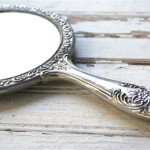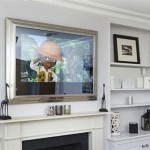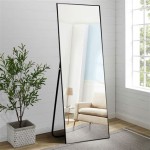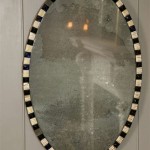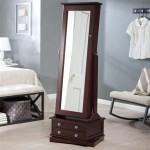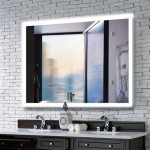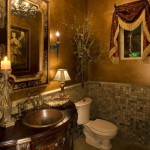How To Put A Mirror On A Wet Wall
Attaching a mirror to a consistently wet wall presents significant challenges due to the inherent limitations of adhesives in damp environments. Standard mirror mastics and glues are designed for dry, stable surfaces and will likely fail when exposed to constant moisture. This can lead to the mirror detaching, potentially causing damage and creating a safety hazard. Therefore, specialized approaches are required to ensure a secure and long-lasting bond.
Before attempting to mount a mirror on a wet wall, the source and extent of the moisture must be thoroughly investigated and addressed. This is crucial for the longevity of both the wall and the mirror. Possible sources of moisture include plumbing leaks, inadequate ventilation, and rising damp. If the moisture problem is not resolved, any attempt to mount a mirror will likely fail. A qualified professional should be consulted to diagnose and rectify the underlying moisture issue before proceeding.
Once the moisture source has been eliminated and the wall has thoroughly dried, a waterproof backing board should be installed. This provides a stable and water-resistant surface for the mirror adhesive. Cement board, marine-grade plywood, or specifically designed waterproof wall panels are suitable options. These materials are resistant to moisture and provide a robust foundation for the mirror. Ensure the backing board is securely fastened to the wall structure using appropriate fasteners, such as corrosion-resistant screws.
Choosing the correct adhesive is paramount for success in wet environments. While standard mirror adhesives are unsuitable, specialized construction adhesives formulated for wet conditions are available. These adhesives typically offer superior bonding strength and resistance to moisture. Epoxy adhesives are another viable option, known for their exceptional bonding capabilities and durability. Consult the manufacturer's instructions for the specific adhesive being used, as application methods and curing times can vary.
Prior to applying the adhesive, ensure both the back of the mirror and the surface of the backing board are clean and dry. Any dust, debris, or residual moisture can compromise the bond. Carefully apply the chosen adhesive to the back of the mirror following the manufacturer’s recommendations. The adhesive should be applied in an evenly distributed pattern to ensure full contact and a strong bond. Avoid applying excessive adhesive, as this can create a mess and may not necessarily improve adhesion.
Carefully position the mirror onto the backing board, ensuring proper alignment. Firmly press the mirror against the board to ensure complete contact with the adhesive. Depending on the type of adhesive used, temporary supports may be necessary to hold the mirror in place while the adhesive cures. These supports can be removed once the adhesive has reached its full strength, as indicated by the manufacturer's instructions.
For added security and a professional finish, consider using mirror clips or J-channels. Mirror clips are small metal or plastic brackets that are secured to the wall and grip the edges of the mirror, providing additional support. J-channels are U-shaped metal or plastic profiles that are installed around the perimeter of the mirror, offering a clean, finished look and added stability. These additional measures can provide extra assurance and prevent the mirror from shifting or detaching over time.
Regular maintenance is essential to ensure the longevity of the mirror installation. Periodically inspect the mirror and its surrounding area for any signs of moisture intrusion or adhesive failure. Address any issues promptly to prevent further damage. Keeping the area well-ventilated can also help minimize moisture buildup and prolong the life of the mirror and its adhesive.
In areas subjected to frequent and direct water exposure, such as shower enclosures, specialized mirror products designed for these environments are recommended. These mirrors often feature a waterproof backing or coating that provides superior protection against moisture. They may also incorporate specific installation methods that are more suited to wet conditions. Consulting with a professional glazier or tile installer is advisable in these situations to ensure proper installation and long-term performance.
While mounting a mirror on a consistently wet wall presents numerous challenges, a secure and durable installation is achievable with careful planning and execution. Addressing the underlying moisture issue, selecting appropriate materials, and utilizing specialized adhesives are crucial for success. Adhering to the manufacturer's instructions and performing regular maintenance will further contribute to a long-lasting and trouble-free installation.

How To Hang A Mirror On Tile Wall Remington Avenue
:strip_icc()/Design_CathieHongInteriorsPhoto_ChristyQPhotography-1f0a7254eb7a435aa80046b0bf60d33b.jpg?strip=all)
10 Feng Shui Rules For Mirrors According To Experts

27 Bathroom Mirror Ideas For Every Style Wall Decor

How To Remove A Mirror Glued The Wall Forbes Home

How To Frame A Mirror

Shower Mirror Fogless For Shaving Wall Hanging Bathroom Square Portable Anti Fog Accessories Home Use Temu United Kingdom

Led Mirror In Customized Mirrors

Husfou Fogless Shower Mirror With Razor Holder For Shaving Anit Fog Bath 4 Suctions Wall Hanging Bathroom Com

Ktaxon Led Bathroom Mirror Wall Hanging Vanity With Lights Dimmable Anti Fog Power Off Memory Horizontal Vertical Rectangle 40 X24 Silver Com

Shower Mirror Fogless For Shaving Wall Hanging Bathroom Square Portable Anti Fog Glass With Shaver Holder Organizer Home Travel Temu

